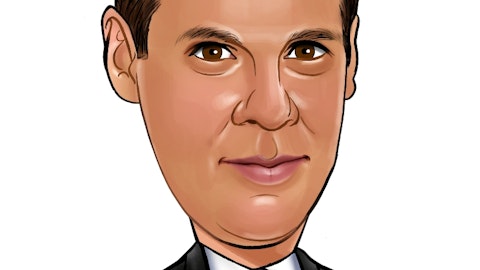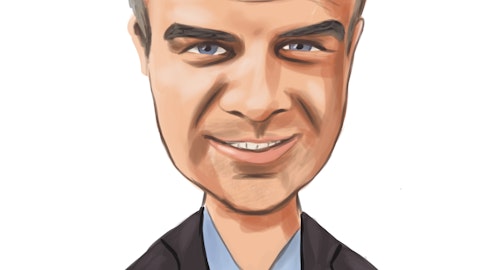So there is two endpoints there for the primary endpoint, the hemoglobin endpoint we use in leverage our internal data, for all of the statistical underpinnings. And then for the VOC obviously we have been looking at other programs to make powering assumptions there and are looking to make a meaningful change on VOCs for patients.
Operator: Our next question comes from the line of Salveen Richter from Goldman Sachs.
Unidentified Analyst: This is [indiscernible] for Salveen. Just one question from us on the licensing agreement with Alnylam. Given the novelty of the siRNA modality for Agios, what gives you confidence in the clinical development process?
Sarah Gheuens: So, thanks for the question. So I think it gives us confidence, because we do have internal expertise that have worked on this modality, but also many other modalities. So it is not like while this is a new compound or modality for Agios, it is not a new compound for Agios employees. And so we are looking forward to putting that internal knowledge to work. And I do think in the context of endpoint patient populations, all of that, it is straight into our wheelhouse of hematology drug development. And so, we are looking forward to putting those skills to work there as well.
Operator: Our next question will come from the line of Andy Berens from Leerink.
Andrew Berens: My questions are also on the MDS program. I was wondering if you could give us some overview of how you see the PKR class in MDS. I think, luspatercept is actually doing pretty well in that indication with sales over 700 million in a subpopulation. Can you give us the physiological rationale for the PKR class in MDS, as well as how you see it potentially being used relative to the EPO agents? And lastly, I know it is early, but how do you think the usage of EPO agents in that disease hypothetically impacts pricing power?
Brian Goff: Yes. So Andy, thanks a lot for the question. I will just start by reinforcing what you just said. We find it a very attractive opportunity, based on the current incumbents and the progress that they’re making. The patient population, as we had on one of our slides, we identify as 75,000 to 80,000 patients across the U.S. and EU5. It is another disease that is ripe for disruption and coming in with PK activation, a very different mechanism of action. And as Sarah has noted a couple times already, on top of all that as an oral small molecule, we think has significant potential to be differentiated. But of course, we are going to be guided by the 2A data. You want to comment further, Sarah?
Sarah Gheuens: Well, just on the part of the rationale why we believe PK activation may work in MDS, it is truly there are similarities between MDS and Thalassemia that and we obviously have now progressed in Thalassemia quite well. So that is one piece. The glycolytic pathway is impacted in MDS patients at multiple levels, which we believe we can influence as well. There is hexokinase to PYRUKYND ratio disruptions. There is also a fact that MDS patients often have an acquired PK deficiency. So there is a multitude of reasons why we believe PK activation may provide benefit. We have published data on this at EHA, at ASH, and hopefully more to come at Ash. So we are very excited about, you know, the evidence that we continue to build in this disease.
Brian Goff: And Andy, I will just, one other comment I will add is our team goes deep across many potential therapeutic areas that we are focused on. And, you know, sitting with us today, we have Tsveta Milanova, our Chief Commercial Officer who actually has been very involved in this space. And so it is early, of course, we are looking at Phase 2a data, but beyond that, Tsveta will be able to add a lot of insight and expertise in not just the commercial profile of the product, but also as you asked about, you know, pricing down the line and how we maximize the value creation. So we feel like we are really well prepared and cannot wait for this upcoming milestone by year end.
Operator: Our next question comes from Tess Romero of JP Morgan.


